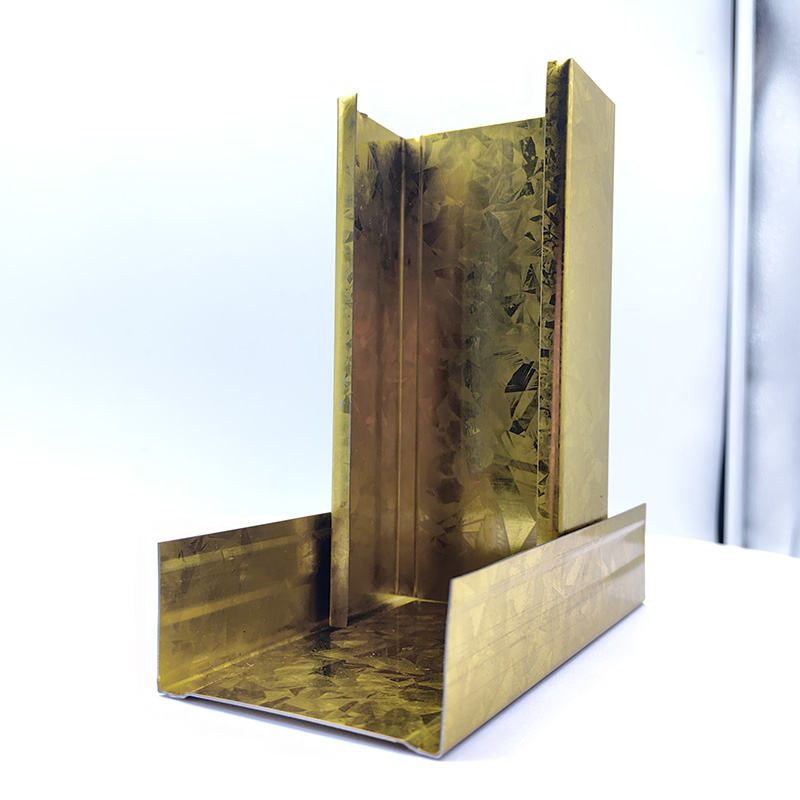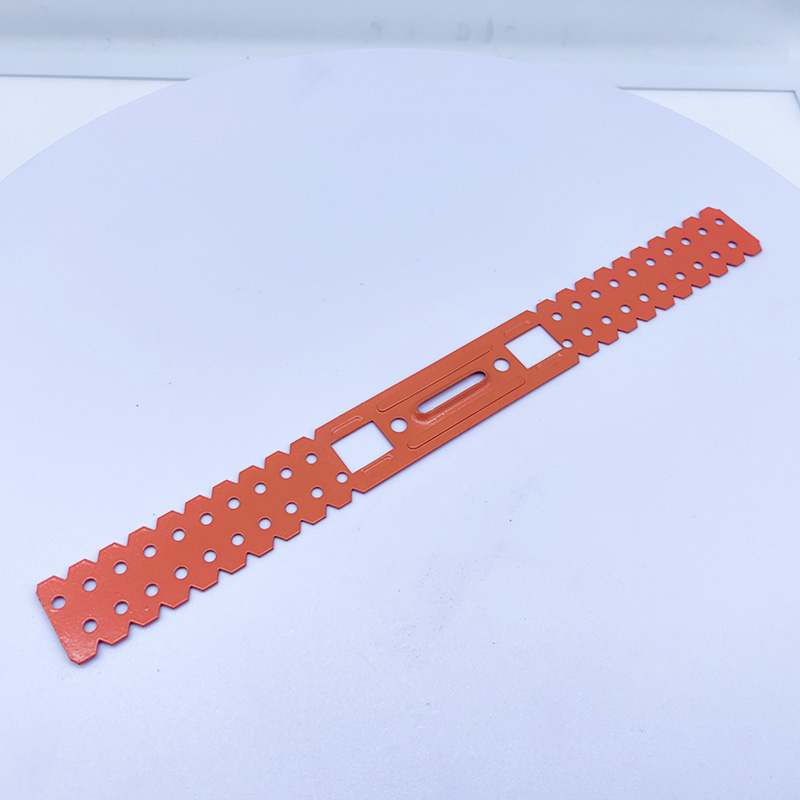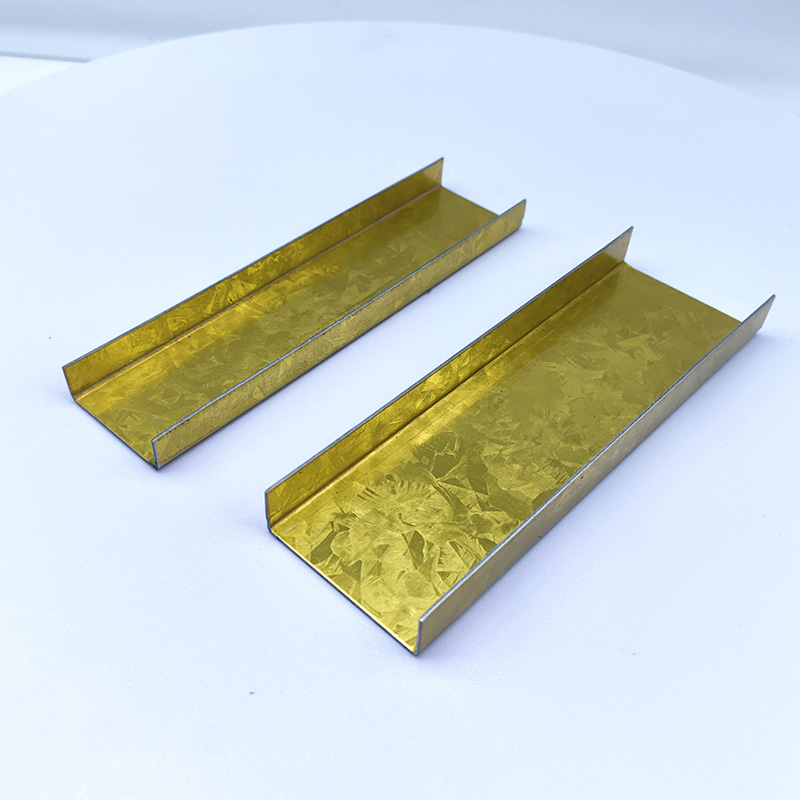Key Factors in Choosing High-Quality Light Steel Wall Materials
2025-02-20 19:50:09
With the booming development of the construction industry today, light steel structure homes are becoming increasingly popular due to their unique advantages, such as lightweight, corrosion resistance, and excellent seismic performance. As a key component of light steel structure homes, the choice of light steel wall materials directly affects not only the building’s safety, comfort, and lifespan but also impacts construction efficiency and cost. Therefore, when selecting high-quality light steel wall materials, it is crucial to comprehensively consider multiple key factors.
Material Quality and Performance Stability
Steel Quality
Light steel studs, as the core support material of the light steel wall structure, directly determine the wall’s overall strength and stability. During the selection process, it is essential to prioritize purchasing from reputable manufacturers. For instance, [Known Manufacturer Name], which has advanced production equipment and a stringent quality control system, ensures that the steel produced is reliable and stable in performance. High-quality steel should have good ductility, meaning it can deform appropriately under external forces without fracturing, thus effectively absorbing energy and ensuring the wall’s safety during natural disasters such as earthquakes. Additionally, high strength is an important characteristic of quality steel, enabling it to bear significant loads and meet the structural mechanical needs of the building. Furthermore, excellent corrosion resistance is crucial, especially in areas with high humidity or industrial pollution. The corrosion-resistant properties of the steel help prevent damage from various corrosive substances, extending the lifespan of the walls. According to related data, light steel studs made from high-quality steel have a lifespan [X]% longer than those made from ordinary steel.
Thermal Insulation and Soundproofing Performance
The thermal insulation and soundproofing performance of light steel wall materials are key indicators of their quality. When selecting thermal insulation materials, the thermal conductivity coefficient is an important parameter. The lower the thermal conductivity, the better the material’s insulation effect. For example, the thermal conductivity of polystyrene boards typically ranges from 0.037 to 0.041 W/(m·K), rock wool boards range from 0.03 to 0.045 W/(m·K), and fiberglass boards are around 0.033 to 0.04 W/(m·K). These materials have good thermal insulation properties, effectively reducing heat transfer between the interior and exterior, thus lowering energy consumption and creating a warm and comfortable living environment. For instance, for a 100-square-meter home, using high-quality insulation materials for light steel walls can save approximately [X] yuan annually in heating and cooling costs.
At the same time, soundproofing material selection is also essential. Materials like mineral wool boards, which contain numerous small pores, effectively absorb and reflect sound waves, achieving soundproofing. The unique design of honeycomb boards makes them excellent for sound insulation, while fiberboards, with their dense fiber structure, effectively block noise. These soundproofing materials can reduce external noise such as traffic and neighbor sounds, providing residents with a peaceful living space. Tests show that light steel walls with high-quality soundproofing materials can reduce indoor noise by over [X] decibels, significantly improving comfort.
Environmental Friendliness and Sustainability
Environmental Performance
With increasing environmental awareness, choosing eco-friendly, non-polluting light steel wall materials has become an inevitable trend in the construction industry. High-quality light steel wall materials should strictly meet national environmental standards, with characteristics such as low emissions and recyclability. During the selection process, it is important to focus on whether the materials have obtained relevant environmental certifications, such as Green Building Material Certification. Certified materials are produced using environmentally friendly processes that minimize harmful emissions during production, reducing the impact on human health and the environment. For example, [Green Certified Product Name] employs advanced environmentally friendly technology in its production, greatly reducing the generation of waste gases, wastewater, and residues. Furthermore, these materials can be recycled and reused at the end of their life cycle, effectively minimizing resource waste and environmental burdens.
Sustainability
In addition to environmental performance, the sustainability of materials is another crucial factor in evaluating their quality. High-quality light steel wall materials should possess excellent durability to withstand various natural and human-made erosions, such as sun exposure, rain, and wind, thereby effectively extending the building’s lifespan. For instance, [Brand of Light Steel Wall Material] has improved anti-aging and wear-resistant properties through special surface treatment and material formulation optimization. As a result, its service life is [X] years longer than ordinary materials in actual use.
Moreover, material recyclability is another important consideration. Selecting renewable or easily recyclable materials helps reduce resource waste and promote the sustainable development of the construction industry. For example, some new types of light steel wall materials use renewable plant fibers as raw materials, reducing dependency on non-renewable resources and naturally decomposing when discarded, thus causing no environmental pollution.
Construction Convenience and Cost-Effectiveness
Construction Convenience
The construction convenience of light steel wall materials directly impacts both project timelines and costs. High-quality materials should be easy to install, dismantle, and maintain, which can significantly reduce difficulty and time costs during construction. For example, [Brand of Light Steel Studs] employs standardized designs and modular production methods, making installation simple and quick. Construction personnel can easily follow the manual to complete installation. Additionally, this brand’s studs are also very easy to dismantle and maintain. When problems arise, the faulty parts can be quickly identified and replaced, shortening repair times and lowering maintenance costs. According to actual project cases, using such convenient-to-install materials can lead to an [X]% faster project completion, saving [X] days in construction time.
Cost-Effectiveness
Cost-effectiveness is an important factor in selecting light steel wall materials. Although high-quality materials may have a higher initial cost, their long-term benefits are significantly greater. For instance, materials with good thermal insulation and soundproofing performance can effectively reduce energy consumption and maintenance costs during the building's operation. By reducing the frequency of heating and cooling equipment use, these materials also decrease wear and tear and maintenance expenses. Additionally, the good soundproofing effect reduces disputes and complaints arising from noise, indirectly lowering management costs. For example, in a commercial building, using high-quality light steel wall materials can save [X] yuan in energy costs and reduce maintenance costs by [X]% annually.
Moreover, environmentally friendly and sustainable materials help increase the building's value, enhancing its market competitiveness. As consumers pay more attention to environmental protection and quality, buildings made from eco-friendly, sustainable materials are more likely to gain market recognition and favor, potentially leading to higher sale or rental prices and better returns.
Brand Reputation and After-Sales Service
Brand Reputation
Brand reputation is an important indicator of the quality of light steel wall materials. Well-known brands typically have more comprehensive production systems, ensuring strict control over each step from raw material procurement to product manufacturing, which guarantees the stability and reliability of the product’s quality. Renowned brands also have more industry experience and continuously optimize product performance and quality based on market demand and technological trends. For example, [Known Brand] has many years of production and R&D experience in light steel wall materials. Their products are widely used in large building projects both domestically and internationally, and their excellent quality has earned them a good reputation. Choosing products from well-known brands effectively reduces quality risks and provides strong guarantees for the safety of construction projects.
After-Sales Service
Excellent after-sales service is key to ensuring the quality and performance of materials. When selecting light steel wall materials, attention should be paid to whether the manufacturer’s after-sales service system is complete. A good after-sales service system should include timely, professional technical support and repair services. When issues arise during use, the manufacturer should respond quickly, dispatching technical personnel for on-site guidance and repairs. For example, [Brand Name] has established a 24-hour customer service hotline to answer questions and has set up numerous after-sales service points nationwide, ensuring that repairs can be handled swiftly. Such quality after-sales service provides users with peace of mind and ensures the safety and stability of the building.
Climate Adaptability
The choice of light steel wall materials is significantly influenced by the climate conditions in different regions. In cold regions, where winter temperatures are low, the demand for insulation performance is particularly high. Therefore, materials with better insulation properties, such as thick rock wool boards or polystyrene boards, should be prioritized to ensure heat retention indoors and reduce heating costs. For example, in northeastern regions, using high-quality insulated light steel wall materials can effectively reduce the indoor-outdoor temperature difference, maintaining comfortable indoor temperatures.
In humid regions, such as southern coastal cities, moisture resistance becomes crucial. Materials with good moisture resistance, such as cement fiberboard with water-resistant treatment or specially coated light steel studs, should be chosen to prevent deformation and corrosion from moisture, ensuring the wall’s performance and lifespan.
In hot regions, the thermal insulation and high-temperature resistance of materials must be considered to reduce the impact of solar radiation on indoor temperatures and lower air-conditioning energy consumption. For example, in regions like Xinjiang, light steel wall materials with reflective thermal coatings can effectively reflect solar heat and lower indoor temperatures.
Conclusion
Choosing high-quality light steel wall materials requires comprehensive consideration of factors such as material quality and performance stability, environmental friendliness and sustainability, construction convenience and cost-effectiveness, brand reputation and after-sales service, and climate adaptability. Only through careful and detailed evaluation of these factors can you ensure the selected materials meet the building’s quality and performance requirements, providing a safe, comfortable, and durable living environment. If you have any questions or need further technical support during the selection process, feel free to consult professionals or communicate with material suppliers.

A Double Anti-Rust Gold Partition Wall Stud is a type of steel stud commonly used in the co...

A CD UD Profile Furring Clip U Clamp is a type of metal fastening component used in the ins...

A 60mm Ceiling Grid refers to a type of suspended ceiling system, commonly used in commerci...

38mm Main Tee and 50mm Main Tee refer to the widths of the main tee profiles used in suspen...

